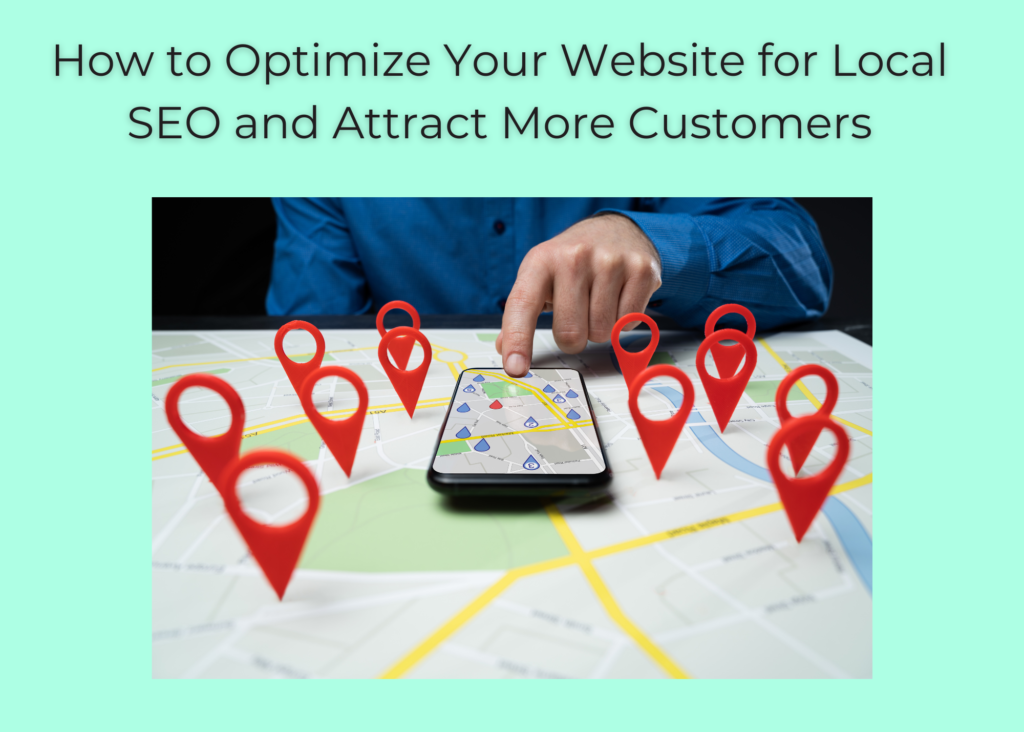
How to Optimize Your Website for Local SEO and Attract More Customers
For small businesses, ranking high in local search results can be the difference between a steady stream of customers and getting lost in the digital shuffle. Local SEO ensures your business is visible to potential customers in your area when they search for the services or products you offer. Here’s how to optimize your website and improve your local search rankings.
1. Optimize Your Google Business Profile
A well-optimized Google Business Profile (GBP) (formerly Google My Business) is crucial for local search visibility.
✔ Ensure Accurate Business Information – Your name, address, and phone number (NAP) should be consistent across all online listings.
✔ Select the Right Categories – Choose categories that best describe your business.
✔ Upload High-Quality Photos – Showcase your storefront, team, or products.
✔ Encourage Reviews – Positive reviews improve credibility and rankings.
2. Use Local Keywords in Your Website Content
To rank for searches in your area, your website should include keywords that reflect local intent.
🔹 Identify location-specific keywords (e.g., “Holbrook NY marketing agency” or “best plumber in Middletown CT”).
🔹 Optimize key pages (homepage, service pages, blog content) with these keywords.
🔹 Use location-based landing pages if you serve multiple areas.
3. Optimize Your Website for Mobile Users
More than 60% of local searches come from mobile devices. A mobile-friendly site is essential for both SEO and user experience.
✅ Use responsive design to ensure your site looks great on all devices.
✅ Improve page speed – slow sites increase bounce rates.
✅ Make your contact information easy to find with click-to-call buttons.
4. Build Local Citations and Backlinks
Citations and backlinks from reputable local sources boost your website’s authority.
✔ Get listed in online directories like Yelp, Angi, and the Chamber of Commerce.
✔ Earn backlinks from local blogs, news sites, or business partnerships.
✔ Use structured data markup to help search engines understand your location.
5. Create Locally Relevant Content
Producing high-quality, location-based content can drive organic traffic and boost engagement.
🔹 Write blog posts about local events, industry trends, or community involvement.
🔹 Highlight case studies or testimonials from local clients.
🔹 Create city or neighborhood-specific service pages.
6. Leverage Social Media for Local Engagement
Social signals can indirectly impact SEO and help build trust with your audience.
✅ Share updates about local events or promotions.
✅ Engage with local customers through comments and messages.
✅ Link back to your website from your social profiles.
7. Monitor Your Local SEO Performance
Tracking your local SEO efforts ensures you’re making data-driven improvements.
📊 Use Google Search Console and Google Analytics to monitor traffic.
📊 Check your Google Business Profile Insights to track search queries and customer actions.
📊 Conduct periodic SEO audits to find areas for improvement.
Final Thoughts
Local SEO is an ongoing process, but with the right strategies, you can improve your visibility and attract more customers in your area. By optimizing your Google Business Profile, refining website content, and leveraging local backlinks, your business can climb the local search rankings.
Want expert help improving your local SEO? Crystal Vision Marketing specializes in local search strategies that get results. Contact us today!

